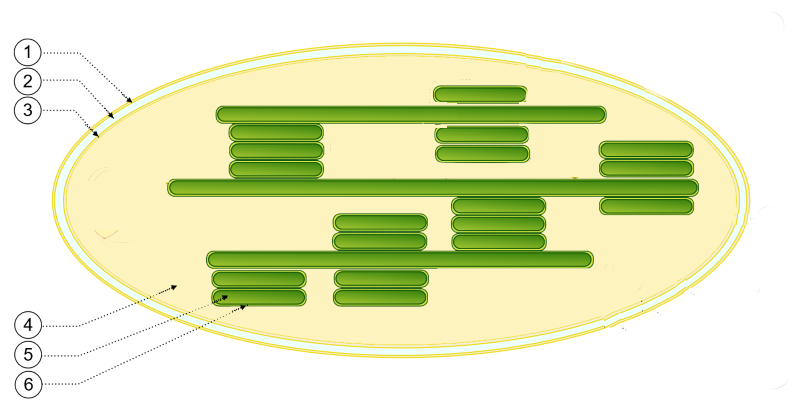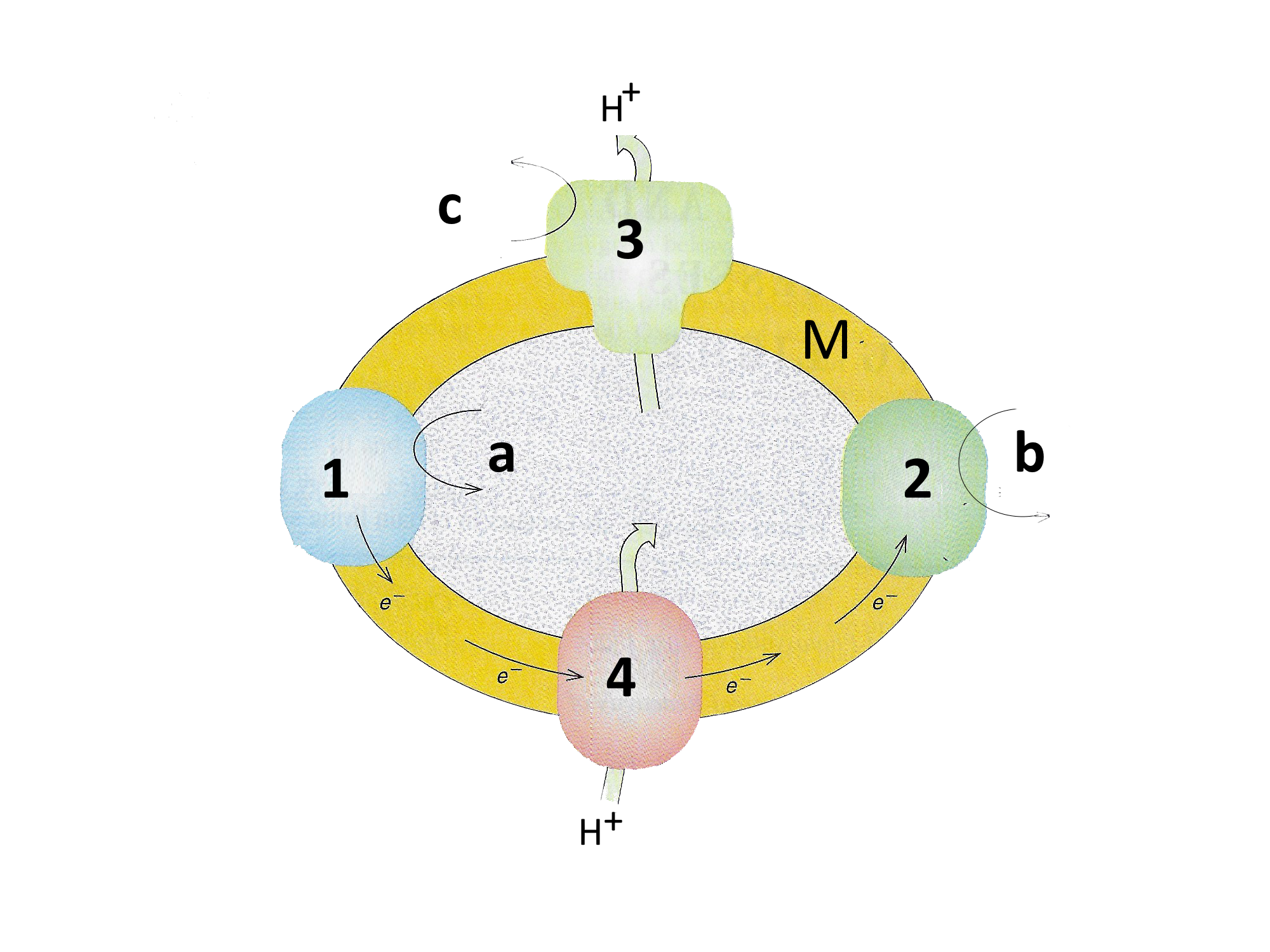





(Oxygen)photosynthesis is a series of reactions that take place in the chloroplasts of green plants:

(4) Under the influence of sunlight (1) these plants absorb carbon dioxide $ CO_2 $ (2) and water $ H_2O $ (3) to store energy and produce oxygen $ O_2 $ (5) (as waste!)

(6) With the stored energy, they then succeed in producing the carbohydrates (HC) they need.

1: Outer membrane, very permeable 2: Intermembrane space 3: Internal membrane, not very permeable except for reagents and products of photosynthesis 4: Stroma, contains the enzymes that catalyze the formation of carbohydrates 5: Lumen 6: Thylakoid membrane, contains → chlorophyll and other enzymes that catalyze the capture and release of solar energy

The solar rays strike the thylacoid menbranes and allow the chlorophyll and other enzymes contained therein - (1)to dissociate water and release electrons and $ H^+ $ ions to produce $ O_2 $ (oxidation): (a) $ 2H_2O \rightarrow O_2 + 2H^+ + 2e^- $ - (2)to transform $ NADP^+ $ into $ NADPH $ (reduction): (b) $ NADP^+ + H^+ + 2e^- \rightarrow NADPH $ For details see → here - (3)to form $ ATP $ from $ ADP $ (c) $ ADP + P_i \rightarrow ATP + H_2O $ with $ P_i $ = (hydrogen)phosphate For details see → here (4) The transport of electrons as well as the charge balance for the $ H^+ $ ions in the lumen and stroma is ensured by other enzymes of the thylakoid membrane

In the stroma a complex cycle (Calvin cycle) uses the action of $ ATP $, $ NADPH $ and $ H^+ $ to graft carbon dioxide onto hydrocarbon chains: a 3-phosphoglycerate b 1,3-diphosphoglycerate c 3-phosphoglceraldehyde d fructose-6-phosphate There is a complex passage implementing c and d e ribulose-5-phosphate f ribulose-1,5-diphosphate The "waste" of this cycle namely ... g sucrose (saccharose) h starch. .. are at the origin of the structure of all living beings and comes from fructose-6-phosphate
- Plants are the basis of food. - All sources of fossil energy, coal, lignite, petroleum and natural gas are products of photosynthesis. Even if these materials will be replaced little by little by renewable energies, they will always be essential to manufacture plastics, drugs, colorants etc. - The oxygen in the atmosphere, produced only by photosynthesis, is necessary for respiration and, transformed into ozone $ O_3 $ in the stratosphere, it thus absorbs most of the harmful UV rays. - The vegetation produces a balanced climate due to the absorption of the greenhouse gas $ CO_2 $ and the partial absorption of light rays, - Without photosynthesis life would not have evolved on earth.